
- Historical Periods
- Places & Collections
- What's On
- Stories & Media
- Children’s World
- World Heritage
- Explore Egypt's Map
- Privacy Policy
- Terms and Conditions
- Related links
- Predynastic Period
- Early Dynastic Period
- Old Kingdom
- First Intermediate Period
- Archaeological Sites
- Collections
- Sunken Monuments
- Stories Hub
- Child Media Hub
- Child Story Hub
- The Coloring Game
- Pharaoh's Quiz
- A Virtual Tour through the Tutankhamun Colle...

A Virtual Tour through the Tutankhamun Collection at the Egyptian Museum
Today we take you on an exclusive tour to see the iconic mask of the Golden Pharaoh, Tutankhamun, in the Egyptian Museum in Tahrir.
Tutankhamun has captivated audiences worldwide since British archaeologist Howard Carter discovered his tomb back in 1922. He has become an international icon of our Egyptian civilization.
Painstakingly excavated over the course of almost ten years, the tomb's four small rock-cut chambers hidden beneath the sands of the Valley of the Kings yielded over 5,000 incredible objects, bearing witness to the life and death of this king. The discovery of the tomb of Tutankhamun was the most spectacular discovery in the history of archeology.
Although a recent CT scan of Tutankhamun’s mummy has revealed interesting new information about the techniques in his mummification, and has confirmed that he was around 18 years old when he died, the cause of his death is still uncertain.
The treasures of the Golden Pharaoh were registered in the Egyptian Museum in Tahrir in 1934.
https://my.matterport.com/show/?m=85n8j312Ur4
#ExperienceEgyptFromHome
The discovery of King Tut’s tomb
Find out how explorers uncovered this ancient Egyptian resting place.
The air was hot and musty as the explorers made a hole in the plaster-filled doorway of the ancient Egyptian tomb. No one had seen inside this royal resting place for 3,000 years, and they didn’t know what they would find.
When archaeologist Howard Carter held up a candle to peer inside on November 26, 1922, the light glinted on golden objects. This tomb, belonging to the Pharaoh Tutankhamun, would soon become the most famous ancient Egyptian discovery of all time.
Meet this ancient ruler
Pharaoh Tutankhamun—Tut for short—ruled over ancient Egypt from about 1333 to 1323 B.C. He became king when he was just nine years old during a challenging time in ancient Egyptian history.
Tut’s father, Akhenaten, had tried to change the religious beliefs of the land. He wanted Egyptians to worship just one god—the sun, called Aten—instead of the 2,000 gods that people had believed in for thousands of years. The priests, elites, and common people probably disliked this change, but they had to follow their pharaoh’s orders, or at least appear to: Archaeologists have found small statues of the old gods in people’s houses from around this time.
After Akhenaten died, nine-year-old Tut took the throne. He repaired the old temples and paid for new statues of the gods, changing the religious practices back to the way things used to be. He even changed his name: His birth name had been Tutankhaten (the last two syllables honored the sun god), but he changed to Tutankhamun after taking the throne.
As king, Tut would have participated in religious ceremonies and festivals, gone on hunting trips, learned how to ride horses and drive chariots, and trained in military skills.
But Tut didn’t have a lot of time to rule—he died around age 19. Experts aren’t sure if his death was caused by an injury from a chariot crash , a mosquito-borne illness, a bone disease, or some combination of these. Whatever the reason, Tut didn’t leave behind any children, so the throne went to his advisor Ay.
The forgotten pharaoh
Most pharaohs’ tombs from this time were cut deep into the rock and contained many rooms. But Tut’s mummified body was placed in an unusually small tomb in the Valley of the Kings, a hilly area where pharaohs were buried for about 500 years.
Some experts think that Tut was in the process of building himself a large tomb fit for a pharaoh, but because he died so young, the workers didn’t have time to finish it. Others believe that Ay might have swapped tombs with Tut, putting the young king in the tomb Ay had started for himself.
Whatever the reason, the Tut’s burial was rushed. Spots of mold on the paint inside the tomb show that workers didn’t let the paint fully dry before sealing the tomb.
The pharaohs after the young king wanted people to forget Akhenaten and anyone connected to him—including Tut. Their names were stricken from the list of kings, and statues in their honor were destroyed. Over time, people forgot all about this short-lived king: Just 150 years later, workers built the tomb of Ramses VI almost right on top of Tut’s, having forgotten his tomb was ever there.
The tomb detective
Through the years, other archaeologists working in the Valley of the Kings had found small items—a cup, a jar, a piece of linen—with Tut’s name, but his tomb—or his mummy—had never turned up. Eventually, these experts were certain that they’d found everything in this spot. But British archaeologist Howard Carter believed that Tut’s tomb was still out there to be found.
In 1917, Carter and a wealthy British man, Lord Carnarvon, started searching for Tut, carefully digging in the sand all the way down to the bedrock in each section where they looked so they’d be sure not to miss anything. Years went by without any Tut discovery, and Carnarvon was ready to give up. Carter asked for just a few more months. Three days after starting this latest search, the team uncovered what looked like a step buried in the sand. As they removed the sand and debris, found more steps leading down. Finally, they discovered a plaster doorway stamped with a name: Tutankhamun.
Opening the tomb
But these explorers weren’t sure that they’d find anything inside. Almost all the tombs in the valley had been robbed in ancient times, leaving few items behind. Plus, the plaster showed signs of being broken and resealed.
But when they peered inside the small hole, they found a tomb almost entirely intact. Carter later wrote, “Details of the room emerged slowly from the mist … strange animals, statues, and gold—everywhere, the glint of gold.”
What goes inside a pharaoh’s tomb? The ancient Egyptians believed they needed to fill it with all the stuff that a ruler might need in the afterlife. And since they believed the afterlife would be a lot like normal life, that meant packing everyday items like clothing, food, beds, chariots, headrests, and games. The pharaoh would also need all his ceremonial stuff like thrones, statues, and jewelry. Plus workers added a few “magical” items like shabtis, little human statues that people believed would serve the ruler in the afterlife.
Carter and his team spent more than two months removing and cataloging the more than 600 items in the first room, which he called the antechamber. Things were a bit messy. At least twice, ancient looters had broken into the tomb and rifled through the Tut’s treasures in search of jewelry and other items to sell. Luckily, ancient valley guards stopped the robbers before they could take everything. But the guards didn’t really care about putting things back in order—they just tossed the remaining items back inside the tomb and sealed it up again.
Next, Carter opened the burial chamber. The room contained a large golden shrine, or box, that filled almost the entire space. Inside it—all nested within one another—were three other shrines, a stone sarcophagus, three golden coffins, and finally, the mummy of Tutankhamun.
Carter then excavated a room he called the treasury, filled with a smaller shrine containing Tut’s organs that had been removed during mummification. The room seemed to be guarded by a statue of Anubis, the god of mummification and the dead. Lastly, the team removed the items from a room called the annex, filled with over 2,000 items.
Pharaoh's curse?
Carter spent nearly 10 years removing more than 5,000 objects from the tomb. The discovery and excavation delighted people around the world who followed his work in newspapers and radio. (U.S. president Herbert Hoover even named one of his dogs King Tut.)
But people were fascinated for another reason: Just six months after opening the tomb, Carter’s wealthy funder, Lord Carnarvon, died from an infected mosquito bite. And when Carter gifted an object from the tomb to a friend, that man’s house burned down, was rebuilt, and then flooded. Some say it was punishment for opening Tut’s tomb, but Carter lived for another 17 years.
King Tut’s tomb is still the most intact royal Egyptian tomb ever found, giving historians important information about this ancient culture. Although the pharaohs who came after Tut wanted him to be forgotten, today he’s one of the most famous ancient rulers of all time.
Learn more at National Geographic .
Read This Next
- Women Heroes
The First Olympics
Mummy mystery: king tut.
- Terms of Use
- Privacy Policy
- Your California Privacy Rights
- Children's Online Privacy Policy
- Interest-Based Ads
- About Nielsen Measurement
- Do Not Sell My Info
- National Geographic
- National Geographic Education
- Shop Nat Geo
- Customer Service
- Manage Your Subscription
Copyright © 1996-2015 National Geographic Society Copyright © 2015-2024 National Geographic Partners, LLC. All rights reserved

- DIGITAL MAGAZINE
MOST POPULAR
Tutankhamun’s Treasures Resource Kit
Discover the treasures from inside king tut’s tomb….

Did you know it’s almost 100 years since Tutankhamun’s tomb was discovered? Celebrate by learning all about the ‘ Boy King ‘ in our Tutankhamun’s Treasures Primary Resources – packed with fascinating information and exciting activities for children to enjoy!
These primary resources feature mind-blowing facts and images about the world’s most famous pharaoh. By investigating the amazing artefacts discovered in King Tut’s tomb, pupils will gain both an understanding of his role as ruler of Egypt , and an insight into Ancient Egyptian beliefs on life and death . Pupils will also learn about the history and culture of Ancient Egypt as a whole – from its ancient monuments and hieroglyphics , to Egyptian gods and mummification !
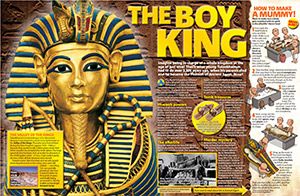
Resource Contents:
- Tutankhamun Treasures: Information sheets and Activity Pack!
- All About Ancient Egypt: Info Pack and Quiz!
Download the resources at the bottom of this page!
These teaching resources can be used in study group tasks for learning about King Tutankhamun and Ancient Egypt, as a printed handout for each pupil to review and highlight key information – or for display on the interactive whiteboard for class discussion.
Will your class be visiting the Tutankhamun Treasures of the Golden Pharaoh exhibition at the Saatchi Gallery, London? Then download the Exhibition Pack, featuring a Teacher Resource, Activity Trail and Educators Guide!
Get a flavour for the exhibition that awaits you in this video that explores Nat Geo Kids’ top five artefacts on display:
Curriculum information.
N.B. The following information for mapping the resource documents to the school curriculum is specifically tailored to the English National Curriculum and Scottish Curriculum for Excellence . We are currently working to bring specifically tailored curriculum resource links for our other territories; including South Africa , Australia and New Zealand . If you have any queries about our upcoming curriculum resource links, please email: [email protected]
This History primary resource assists with teaching the following History objectives from the National Curriculum :
- Know and understand significant aspects of the history of the wider world: the nature of ancient civilisations; the expansion and dissolution of empires; characteristic features of past non-European societies; achievements and follies of mankind.
National Curriculum Key Stage 2 History objective :
- Pupils should be taught about: the achievements of the earliest civilisations – an overview of where and when the first civilisations appeared and a depth study of one of the following: Ancient Sumer; The Indus Valley; Ancient Egypt; The Shang Dynasty of Ancient China.
This History primary resource assists with teaching the following Social Studies First level objective from the Scottish Curriculum for Excellence :
- Having selected a significant individual from the past, I can contribute to a discussion on the influence of their actions, then and since.
Scottish Curriculum for Excellence Second level Social Studies objective :
- I can discuss why people and events from a particular time in the past were important, placing them within a historical sequence.
Download primary resource
Leave a comment.
Your comment will be checked and approved shortly.
WELL DONE, YOUR COMMENT HAS BEEN ADDED!
Customize your avatar.

Beastlands: Race to Frostfall Mountain
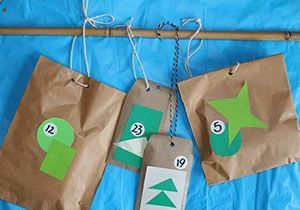
How to make an advent calendar!

10 facts about the Arctic!

Queen Victoria’s children

Sign up to our newsletter
Get uplifting news, exclusive offers, inspiring stories and activities to help you and your family explore and learn delivered straight to your inbox.
You will receive our UK newsletter. Change region
WHERE DO YOU LIVE?
COUNTRY * Australia Ireland New Zealand United Kingdom Other
By entering your email address you agree to our Terms of Use and Privacy Policy and will receive emails from us about news, offers, activities and partner offers.
You're all signed up! Back to subscription site
Type whatever you want to search
More Results

You’re leaving natgeokids.com to visit another website!
Ask a parent or guardian to check it out first and remember to stay safe online.

You're leaving our kids' pages to visit a page for grown-ups!
Be sure to check if your parent or guardian is okay with this first.
Photos: Egypt Launches first virtual visit of King Tutankhamun’s tomb at the time of discovery
As part of celebrations for the 100th anniversary of the discovery of King Tutankhamun’s tomb, the Tourism and Antiquities Ministry, represented by the Supreme Council of Antiquities, on Friday launched the first virtual tour of the tomb recreated as it was first discovered in 1922, with all artifacts intact.
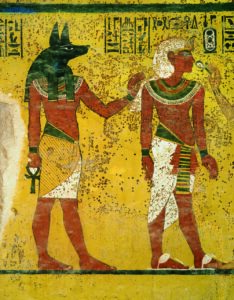
This virtual show is presented at the Visitors Center in the Valley of the Kings in Luxor, using advanced Meta Quest II glasses, and in cooperation with private Egyptian and foreign companies.

The Secretary-General of the Supreme Council of Antiquities, Mostafa Waziri, said that a set of these glasses are available at the Visitors Center in the Valley of the Kings in Luxor.
He noted that the experience has received great response and interaction from most Egyptian visitors and tourists.

This unique experience falls under the Tourism and Antiquities Ministry’s keenness to use modern and advanced technology in displaying and improving the experience of visiting archaeological sites and museums in Egypt, he explained.
British archaeologist Howard Carter discovered King Tut’s tomb in 1922, when he dug through one of the doors and entered the tomb of the pharaoh, which has remained intact for about 3,200 years.
The tomb contained more than 5,000 artifacts, including a solid coffin, a gilded mask, and thrones.
It took Carter ten years to record all the items. But the only thing he couldn’t find was any record of how Tutankhamun died as there were no surviving records of the circumstances of King Tut’s death.
Scholars have now concluded that King Tutankhamun was not murdered, after a lengthy investigation that seemed to refute popular theory.
Related Articles

Excavations in Aswan uncover 33 ancient tombs
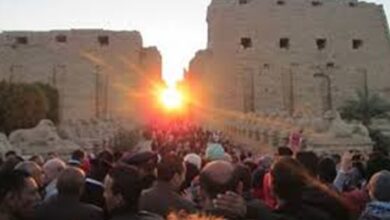
Sun aligns on Karnak Temple in coincidence with summer season

Video: Om El Donya’s second season slated for June 6 release
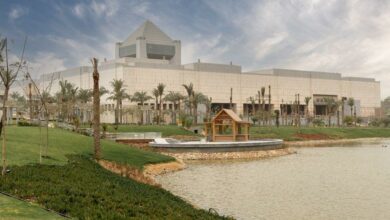
NMEC approves proposal for new hall on ancient Egyptian mummies


Virtual Tour the Tomb of King Tut

Categories:
(Un)Complicating the Story of the Discovery of the Tomb This post is a special feature by Egyptologist Tessa Litecky, in honor of a virtual tour of the Tomb of Tutankhamun for an upcoming exhibition between the Harvard Museum of the Ancient Near East (HMANE) and Ministry of Tourism and Antiquities in Egypt. We’re proud to […]
(Un)Complicating the Story of the Discovery of the Tomb
This post is a special feature by Egyptologist Tessa Litecky, in honor of a virtual tour of the Tomb of Tutankhamun for an upcoming exhibition between the Harvard Museum of the Ancient Near East (HMANE) and Ministry of Tourism and Antiquities in Egypt.
We’re proud to share the guided virtual tour preview. If you’re stateside in Boston or in Egypt, please visit this phenomenal monument and exhibitions at the Grand Egyptian Museum and the Harvard Museum of the Ancient Near East as they open.
Without further ado, go on a virtual Guided Tour of the Tomb of Tutankhamun in the Valley of the Kings here:
https://giza.mused.org/en/guided/307/tomb-of-tutankhamun-kv-62-centennial-and-throne-at-the-harvard-museum-of-the-ancient-near-east
This is in celebration of the 100 year anniversary of the discovery of the Tomb of Tutankhamun in the modern times. We sincerely hope that you enjoy!
Also check out the awesome History of Egypt Podcast created by Dominic Perry about Tutankhamun.
? Podcast Guide
(Un)Complicating the Story of the Discovery of Tutankhamun’s Tomb
The discovery of the tomb of Tutankhamun changed the world. Hidden away safe from tomb robbers for millennia, this discovery was so significant because it was something extremely rare in archaeology: an undisturbed royal tomb. What archaeologists found was a treasure trove of grave goods and personal items belonging to the young king who lived during one of Egypt’s most prosperous periods. Inside was furniture, chariots and trapping, statues, clothing, jewelry, as well as Tutankhamun’s mummy, coffin, and the famous gold mask.
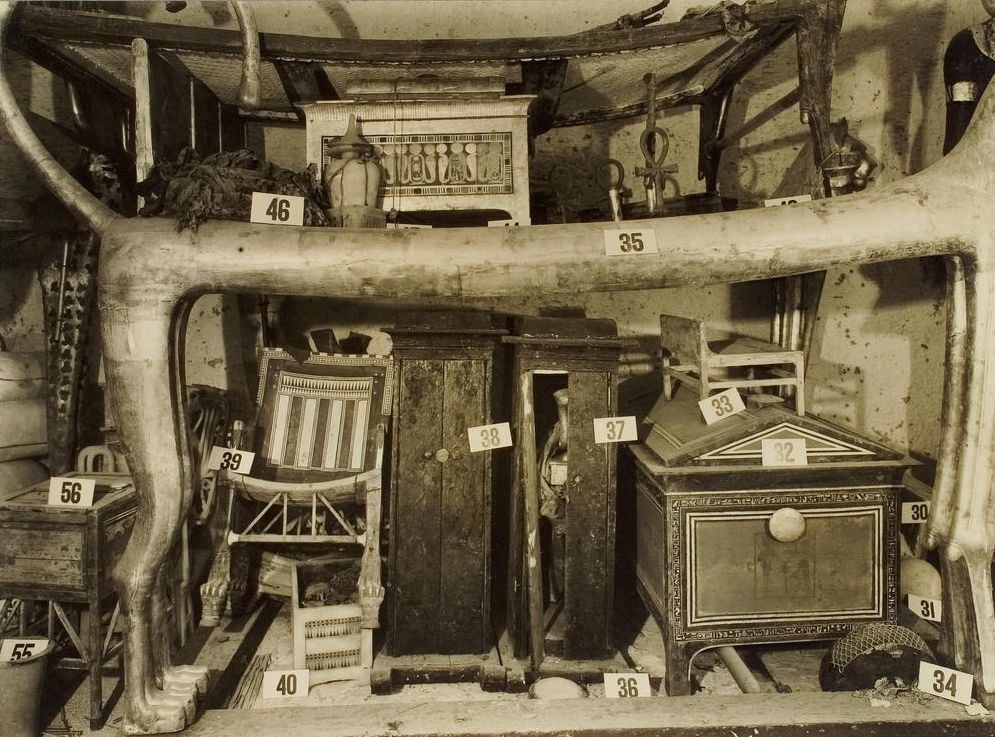
To explore the tomb and see the size for yourself (without all those artifacts) visit our guided tour .
What Howard Carter glimpsed through that small opening into the tomb in November 1922 would continue to fascinate archaeologists and researchers for a century. However, the events of that day would create an unforeseen ripple effect that spread far beyond the arena of Egyptology. The discovery of this enigmatic king and his tomb was tinder for the explosion of Egyptian nationalism, and sparked a global wave of Egyptomania – an obsession with all things Egypt.
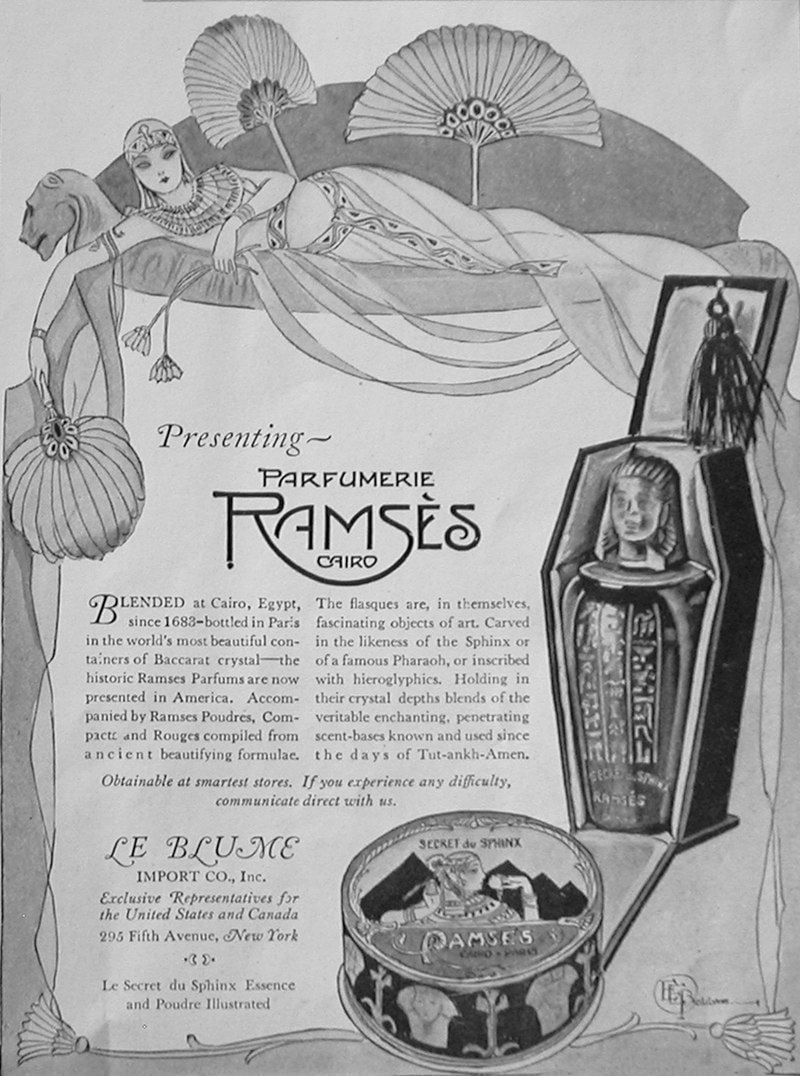
Tut-mania inspired films, books, and music. This song, “Old King Tut”, was recorded in 1923 by the musical duo Billy Jones and Ernest Hare. Pretty catchy, don’t you think? Or maybe you prefer Steve Martin’s satirical bop “King Tut” from 1978…?
History would remember two men behind this extraordinary discovery: the archaeologist and Egyptologist, Howard Carter, and his financial backer, Lord Carnarvon. But the story of Tutankhamun’s tomb encompasses an entire cast of characters who have been overshadowed by the two men at the center. On the centennial of the discovery, we wanted to take the time to tell the story of the other people involved in the discovery of the world’s most famous tomb.
Almina Wombwell
Lord Carnarvon is acknowledged as the dedicated patron of Carter and his excavations, but the real money came from a somewhat surprising source: his wife. Carnarvon married Almina Wombwell in 1895. She was the daughter of a British army officer, Captain Frederick Charles Wombwell, and his French wife, Marie. However, the rumor was that Almina’s biological father was none other than Alfred de Rothschild of the famous Rothschild banking family. Fredrick Wombwell was listed on Almina’s birth certificate, but Alfred de Rothschild acted as her guardian and enabled Almina’s marriage to Lord Carnarvon by providing a £500,000 dowry, which is the equivalent of about £41 million or $48.5 million today.
This extraordinarily large injection of cash allowed Lord Carnarvon to pay off his debts, maintain his impressive estate at Highclere Castle, and provide financial backing for Carter’s excavation work in Egypt, including the salaries of local Egyptian workers.
Without Almina’s fortune and the wealth of the Rothschild family, Tutankhamun’s tomb may have never been discovered. Almina traveled to Egypt with her husband often but, unfortunately, was not present at the opening of the tomb due to an ill-timed toothache. However, her daughter, Lady Evelyn, was there with her father. While it was Lord Carnarvon’s passion for Egyptology that brought the couple back to Egypt year after year, Lady Carnarvon herself became enthusiastic about the excavations and the possibility of discovery. In his book, Carter recalls discovering a cache of alabaster jars after a rather disappointing few months with very few finds. Lady Carnarvon was so excited, she began to dig the beautiful jars out of the dirt with her bare hands. Even after her husband’s untimely death in 1923, Almina continued to fund Carter’s work for several years.
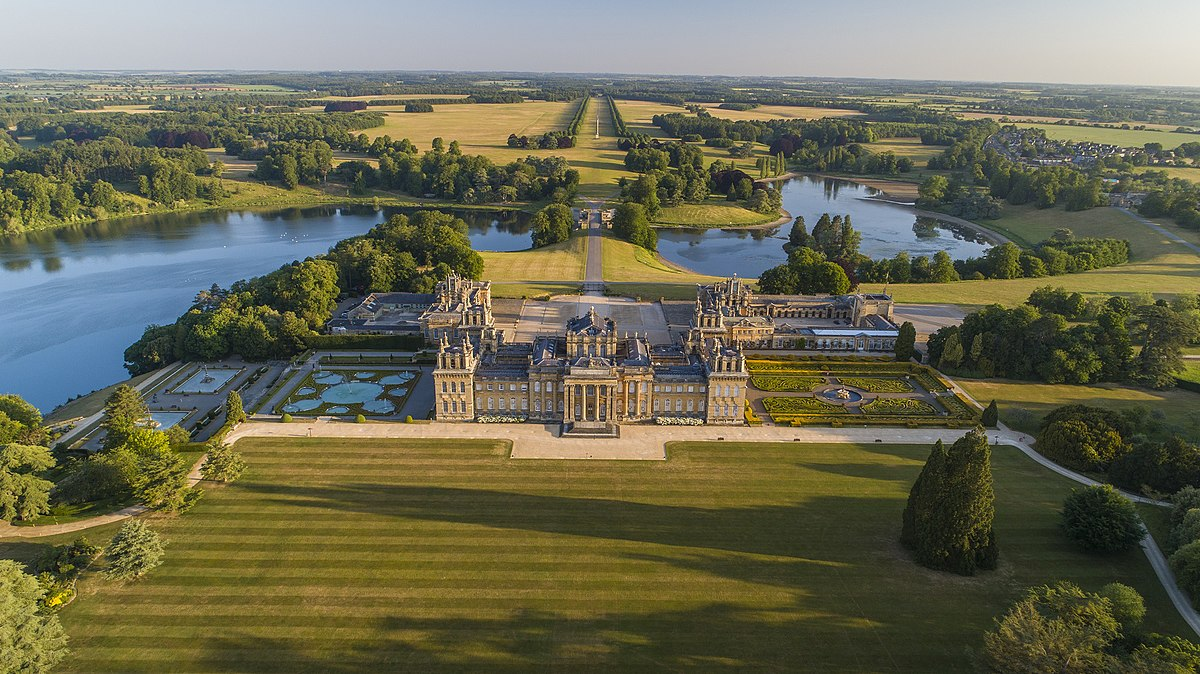
Marriages between male British aristocrats and wealthy women were common around the turn of the century. These lords, dukes, and earls enjoyed the large fortunes brought into the marriage by their wealthy, often American, wives. The women gained a very fashionable title and guaranteed a desirable position in high society as part of the British aristocracy. It was new money and old money coming together to provide exactly what the opposite desired. These so-called “dollar princesses” of the Gilded Age included the mother of Prime Minister Winston Churchill and Consuelo Vanderbilt, whose sizable dowry essentially saved the famed Blenheim Palace from ruin.
The Egyptian Workmen and Ahmed Gerigar
It shouldn’t come as a surprise that the labor of excavating Tutankhamun’s tomb and removing the extraordinary treasures found within was carried out by Egyptian workmen. Ahmed Gerigar acted as foreman, leading teams of local Egyptian workers. No doubt the physical toll of excavating in the hot, dusty conditions of southern Egypt would have been taxing, especially for the young boys who carried baskets of dirt and rocks for hours on end.
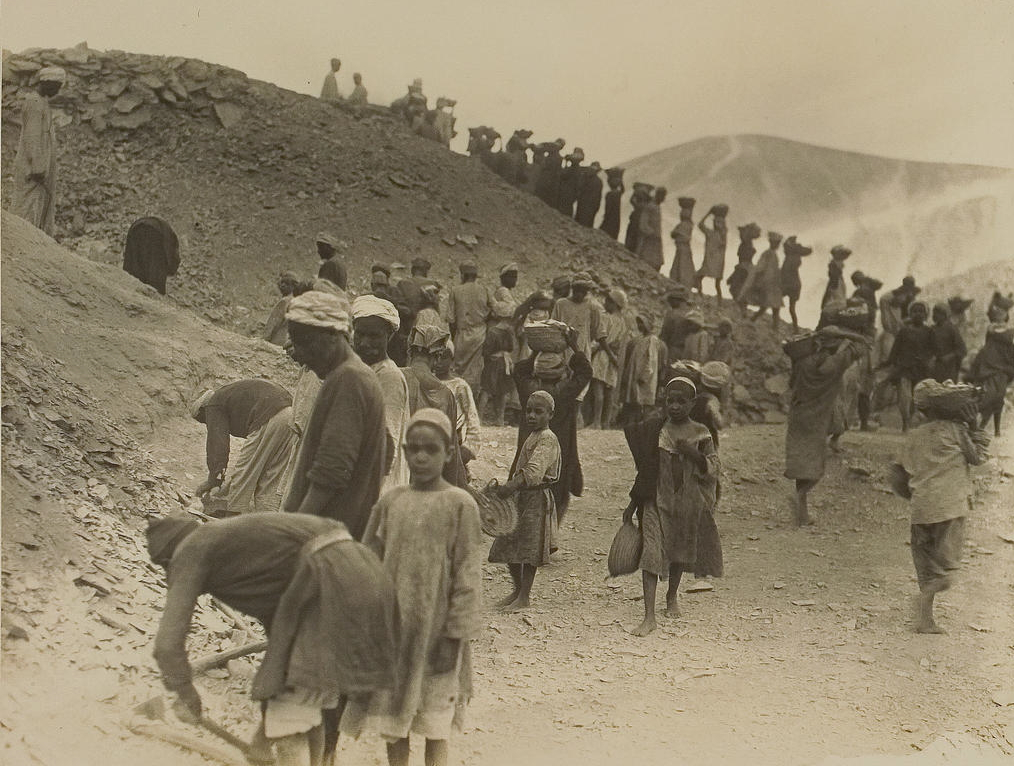
There has been an increasing effort to recast the story archaeology in the early 20th Century with a greater appreciation for the unique contribution of the local people who brouth with them their specialized knowledge of the region and the area’s history.
Recently, one of Ahmed Gerigar’s descendants attended the reopening of Howard Carter’s house in Luxor. The Bodleian Library in Oxford opened an exhibition last April called Tutankhamun: Excavating the Archive . Using the vast archive of the Griffith Institute, the exhibition “brings to life the complex stories of the discovery, excavation, documentation and conservation of Tutankhamun’s tomb, including often overlooked Egyptian members of the archaeological team.”
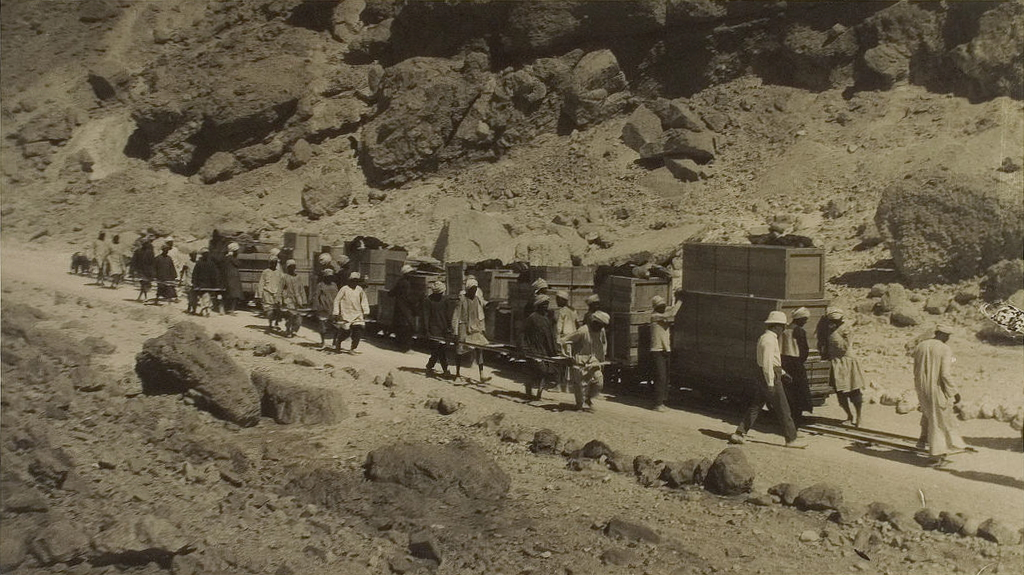
By all accounts, Carter was actually a staunch supporter and defender of his workmen and made a point to acknowledge their contribution. In Carter’s book, The Tomb of Tut-Ankh-Amen , he writes in the preface,
Last of all come my Egyptian staff and the Reises who have served me throughout the heat and burden of many a long day, whose loyal services will always be remembered by me with respect and gratitude and whose names are herewith recorded: Ahmed Gerigar, Hussein Ahmed Saide, Gad Hassan and Hussein Abou Owad.
However, we cannot separate this relationship from the colonial context of 1920s Egypt. The photographic record of the excavation documents the workmen in action, but none are identified or given names.
Hussein Abdel-Rassoul: The Boy with the pectoral
One of the few images in which the Egyptian subject has been identified, and made very famous, is the photograph below of Hussein Abdel-Rassoul. The official photographer of the expedition, Harry Burton, wanted to show how this pectoral would have looked on the shoulders of the young king. So, he grabbed a waterboy, adorned him with this priceless artifact and snapped this iconic image. It was captioned “An Egyptian boy wearing one of Tutankhamun’s pectorals”, but years later, Abdel-Rassoul identified himself as the boy in that image.
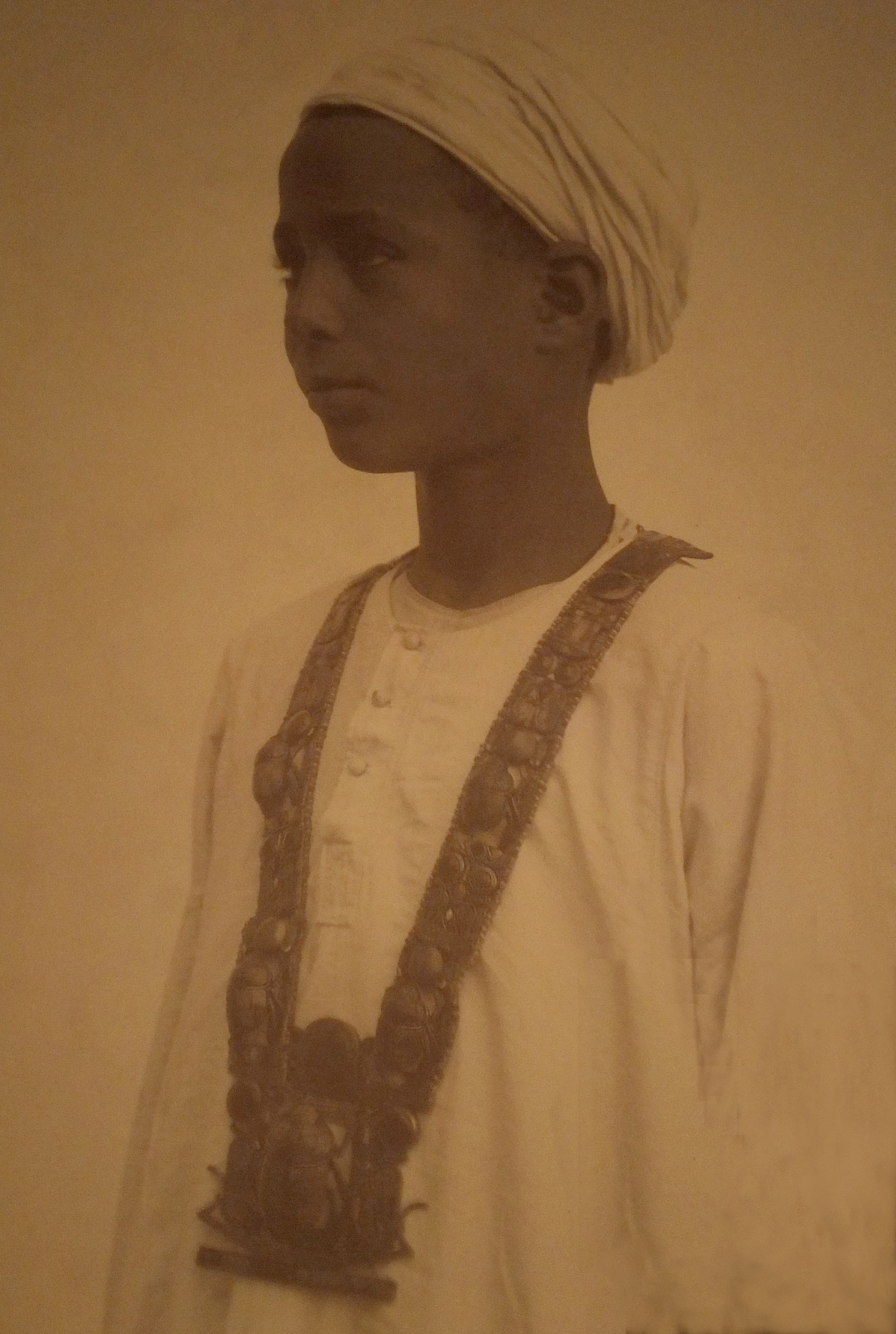
Abdel-Rassoul also claims that it was actually him and his donkey who first discovered the tomb. Carter’s diary records the actual discovery of the tomb only in the most general terms, which has left room for ongoing theories and rumors. In his book, Carter only writes, “Hardly had I arrived on the work next morning (November 4th) than the unusual silence, due to the stoppage of the work, made me realize that something out of the ordinary had happened, and I was greeted by the announcement that a step cut in the rock had been discovered underneath the very first hut to be attacked.” Abdel-Rassoul’s account is that, while transporting water by donkey, he stepped into a hole revealing the first traces of the entrance to the tomb. While others have credited a horse for finding the first step, or believe that it was simply uncovered during the course of normal excavations, Abdel-Rassoul and his descendants have devoted themselves to their version of history.
Complicating History
One of the reasons Hussein Abdel-Rassoul’s story may have been deemphasized in the historical record is because he comes from a family of infamous “tomb robbers” (a profession as old as tomb-building itself). The story goes that the family stumbled upon a royal cache of mummies and grave goods on their land on the West Bank of Luxor. They sold these artifacts to foreign visitors and tourists making a small fortune for the family.
Alternatively, in his recent book, Egyptologist Bob Briar lays out evidence that Howard Carter actually stole artifacts. Objects from Tutankhamun’s tomb have popped up in collections around the world, spurring rumors that Carter and his team lied and smuggled artifacts out of the country and circumvented the Egyptian authorities. So, essentially, also a tomb robber?
Even as we begin to untangle the full story of the discovery of the famous boy-king’s tomb, the characters we uncover are at one time inspiring and disappointing, both simply and problematic. Their contributions to Egyptology are simultaneously groundbreaking and possibly destructive. This doesn’t make it easy to build a nice, clean narrative, but isn’t that what makes history so interesting?
✉️ If you enjoyed this post and want to receive more digital heritage and virtual guided tours to your inbox, sign up for more information about virtual tours and metaverse capture delivered to your inbox by entering your email below!
- Carter, Howard; Mace, Arthur (1923). The Tomb of Tut Ankh Amen, volume 1 . London, p. 83.
- https://visit.bodleian.ox.ac.uk/event/tutankhamun-excavating-the-archive
- The Tomb of Tut Ankh Amen, p 87.
- Brier, Bob (2022). Tutankhamun and the Tomb that Changed the World. Oxford University Press.
Additional Sources
Related Posts
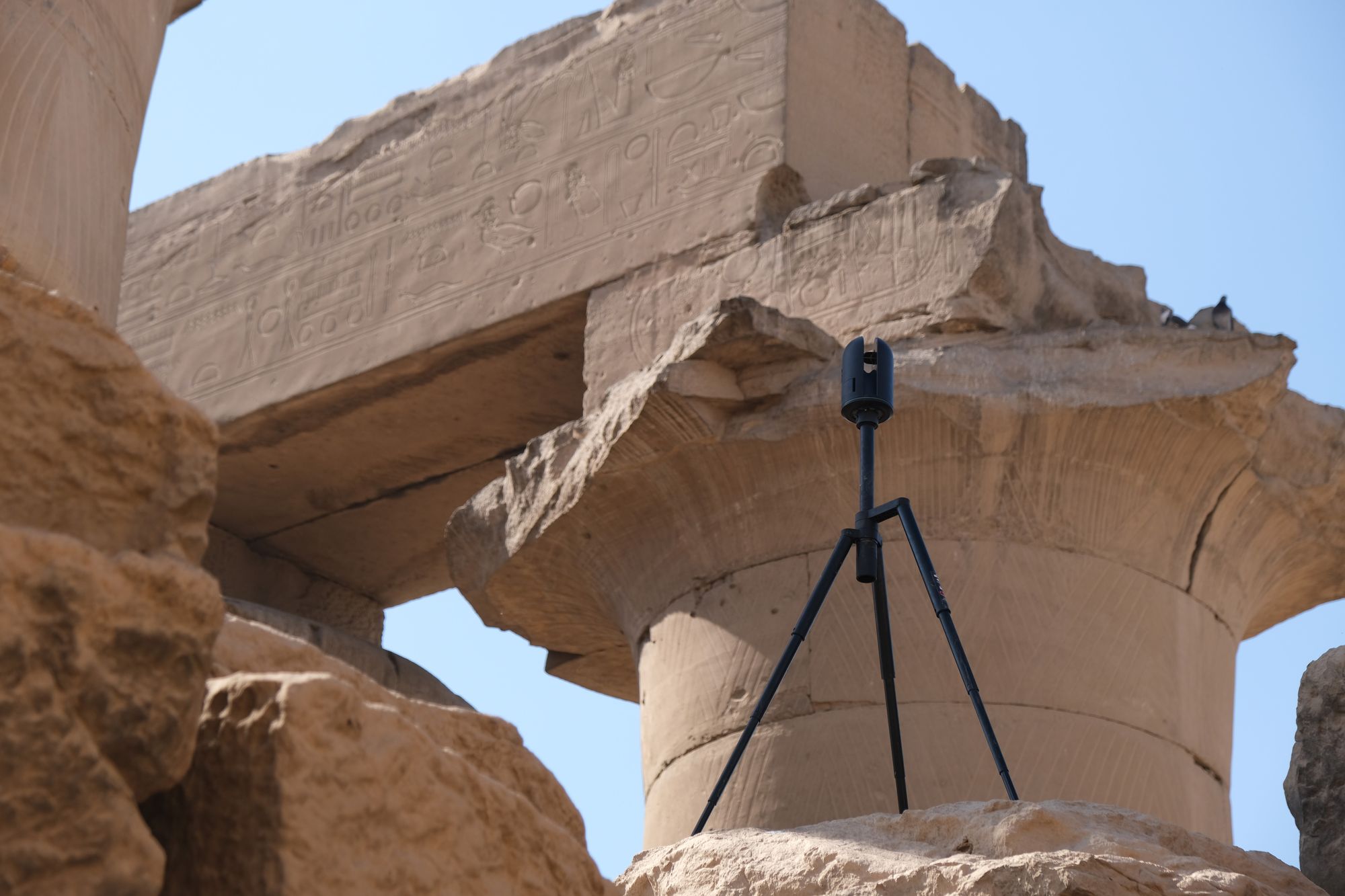
How to Make Accessible Virtual Tours
Comparing 3D Scanning Technologies for Your Museum or Heritage Site Th
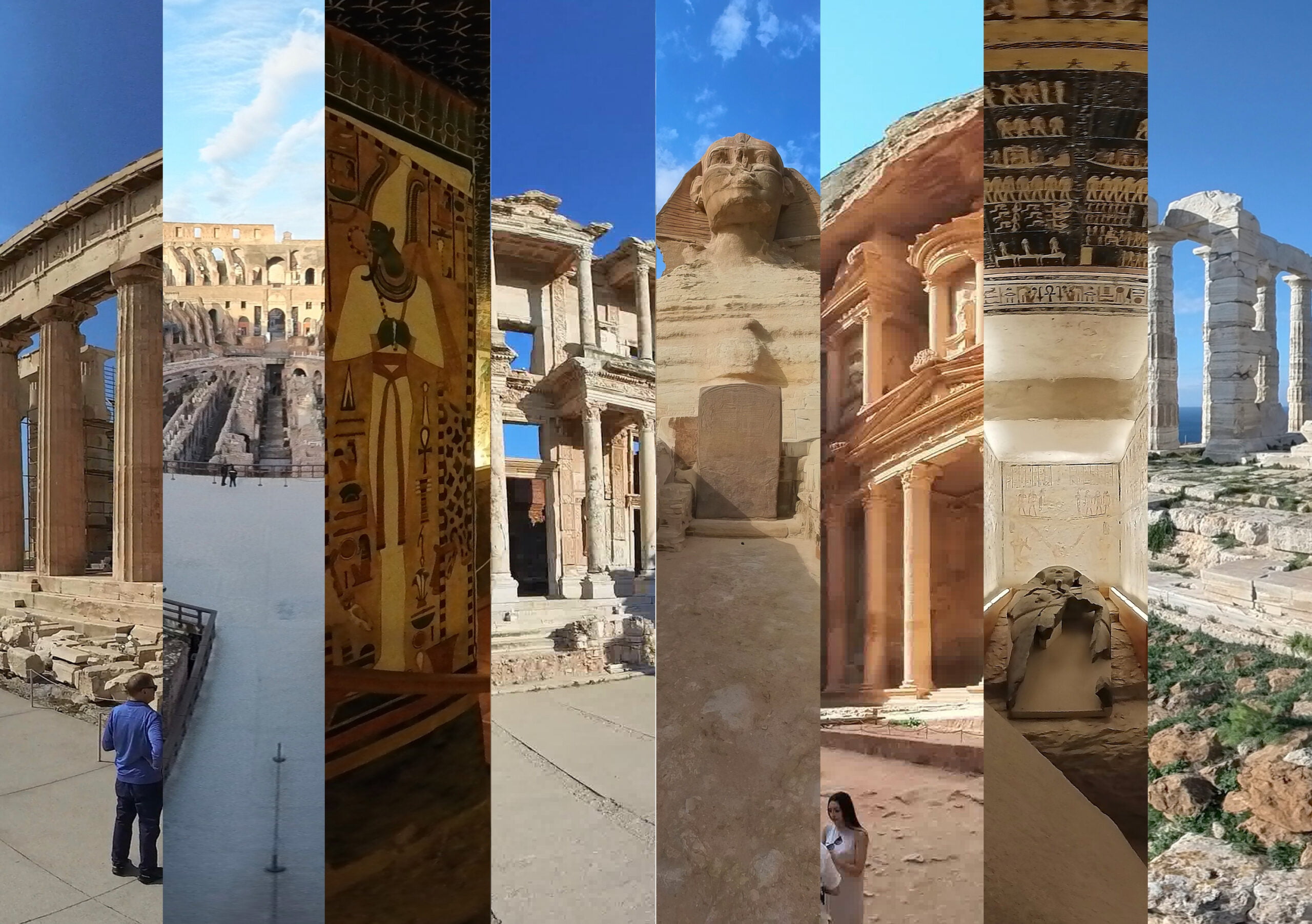
Ancient Mediterranean Spring 2024 Release
50 new spaces and 500+ artifact scans A thing of beauty is a joy forev
Uncovering Ancient Texts in Palimpsests
Discovering hidden Writings at Saint Catherine’s Monastery This
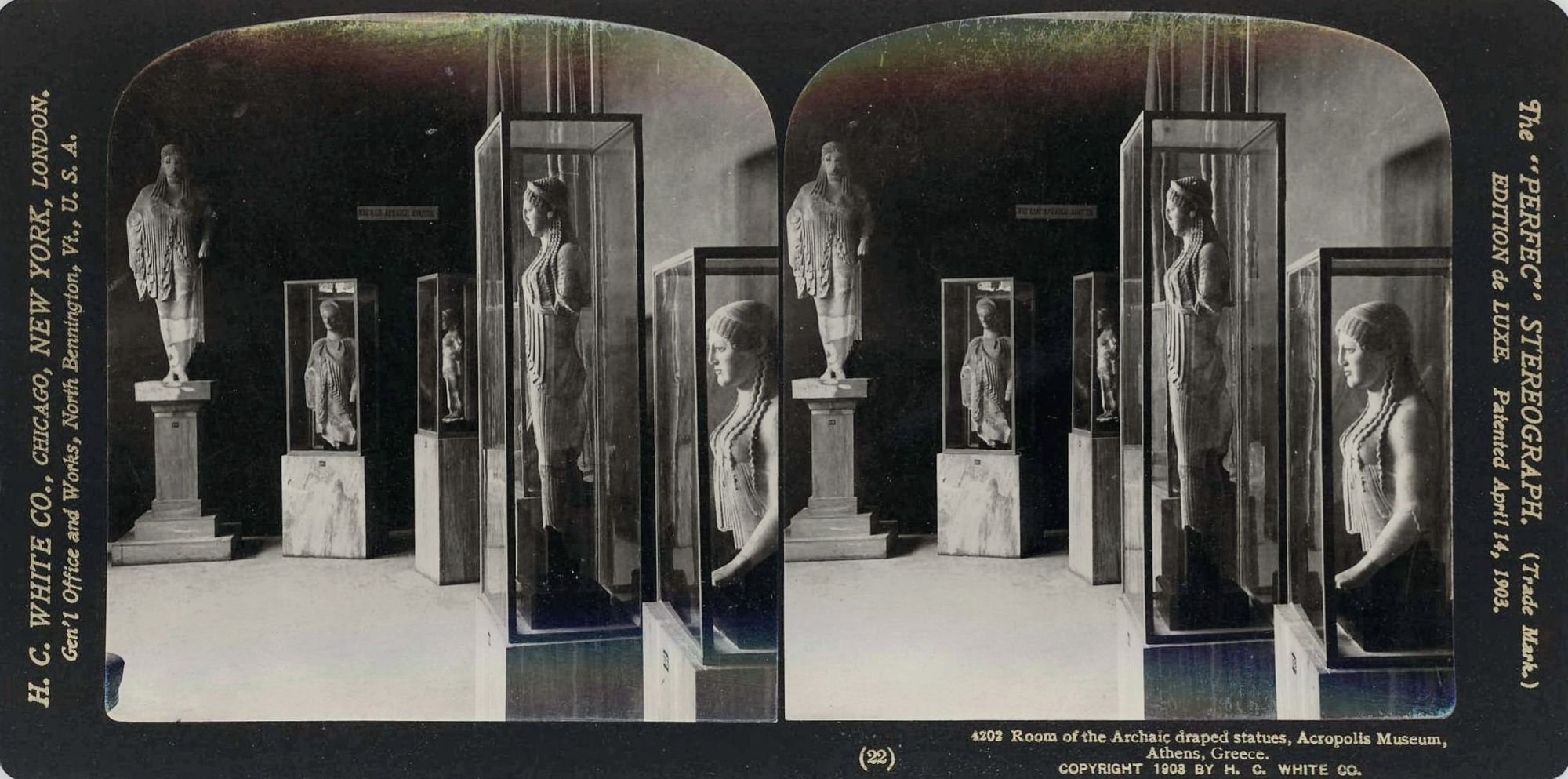
An Overview of Virtual Tours for Heritage Sites and Museums
There has never been a more relevant time for publishing cultural heri

Visual Storytelling Platforms
Telling your Collections’ Stories for Cultural Heritage and Muse
Digitizing the Tomb of Menna
This intensely beautiful New Kingdom tomb has a new digital life in th
Ut tellus eleme ntum sagittis vitae et leo. In ornare quam vivrra orci sagittis eu volutpat. Proin nibh nisl coim entum id venenati numis.
Imagining History
Workshops
Book a history workshop with us prices start at just : £120.
- May 31, 2020
Tutankhamun's Treasure - A Brief Guide for KS2 Students
Updated: Jun 20, 2023
When Howard Carter first discovered Tutankhamun 's tomb in 1922 he unlocked around 5000 stunning treasures that had been hidden underground for thousands of years. Here are a few of them:

Inside the burial wrappings of Tutankhamun himself, Carter found a pair of daggers. Both were stunning artefacts, but one of them was particularly unusual - the iron used to create the dagger contained a large percentage of nickel.
After many years of research, scientists have finally discovered where the iron from this dagger came from;
It came from a meteorite!
Mind blown!

A 3000-year-old tunic of armour was discovered at Tutankhamun's tomb, made up of small leather 'scales' that interlocked (similar to those shown in the image) to protect the wearer's skin from enemy attacks.
This armour was originally thought to be ceremonial. It may have never even been worn by Tutankhamun himself.
But on closer inspection, damage on the edges of the leather scales implies that Tutankhamun not only wore it, but actually fought battles in it! Was Tutankhamun a Warrior King after all?

Tutankhamun was buried with five game boards. He used these to play games of Senet, a popular game played in Ancient Egypt where two players race their pieces across the squares to the finish.
Poorer Egyptian people would play Senet by scratching a grid into the sand, but wealthy Egyptians often had a board made especially for the game (similar to the one in the photo).
Some game boards were even reversible, with a Senet board on one side and a game Egyptologists have called Twenty Squares on the other.

Packed Lunch
It's a long journey to the afterlife and it's important to take some food for the road. So Tutankhamun's embalmers made sure to prepare a packed lunch.
No, sadly this was not a packed lunch like we know it, with sandwiches and crisps. Tutankhamun's lunch included 48 boxes of mummified meats, such as duck and beef. The meats would be dried with salt, bandaged and covered in resins like human mummies. Yum.

A Tale of Two Thrones
One throne was not enough for Tutankhamun, this boy king required two thrones in the afterlife to rest his royal posterior! Also, just to point out, we're not saying that Tutankhamun had two bottoms and could sit on both thrones AT THE SAME TIME, as that would be silly.
Each throne is made from wood and is gold plated. The thrones are inlaid with ebony, ivory and precious stones. They are also exquisitely detailed; the back of the gold throne has a detailed image of Tutankhamun and his queen Ankhesenamun.

No, your eyes aren't tricking you, boomerangs were found in Tutankhamun's burial chamber! In fact, boomerangs had been used by Egyptians for hunting since the Old Kingdom - hundreds of years before Tutankhamun was even born. Hunters would throw them at birds from the safety of their marsh boats.
Many boomerangs were found in the tomb - some which return when thrown and others that do not!
If you are a Primary School teacher then you'll definitely want Imagining History to bring their 'Ancient Egypt: A Time Travel Tour' Interactive workshop to your school.
Our Award-Winning sessions combine role-play, storytelling, demonstrations and drama and performance to bring history to life for your students.
Find out more here!

Further Reading:
Tutankhamun - Pharaoh Profile
How Did Tutankhamun Die? - Myth Buster
An Interview With Howard Carter
- Ancient Egypt
- Kids History Guides
Related Posts
An Interview with Howard Carter - Tons of Info for Primary School Students and Teachers
How Did Tutankhamun Die? Myth Buster for Kids
Who was Tutankhamun? A Speedy Guide for Kids
Choose a History Topic:

Top 6 Terrific Maya Temples You Need To Know About - Infographic

Win a SIGNED Copy of ROMAN BOY: Enter the Competition Now!

Interview - Tony Bradman and the Adventures of Roman Boy

Who was Aethelred the Unready? A Brief Historical Guide.

Interview - Historian Garrett Ryan chats with us about Fat Gladiators, Awesome Emperors, and Perilous Piles of Pottery

Lessons and resources for primary history
Home > Ancient Egyptians > Tutankhamun
A guide to...
Tutankhamun.

Why is Tutankhamun famous?
Tutankhamun (sometimes written Tutankhamen) was an Egyptian pharaoh who has became well-known in modern times because his burial tomb was discovered in 1922. British archaeologists Howard Carter and Lord Carnarvon made the discovery to find that remarkably the tomb still contained the sarcophagus of the pharaoh and a wealth of treasure that had been buried with him. The discovery was unusual and very exciting because most of the grave goods buried with other Egyptian pharaohs had been stolen long ago. The thousands of objects found in Tutankhamun’s tomb have given historians important information about life and death in Ancient Egypt.
What do we know about Tutankhamun himself?
It is likely that Tutankhamun was born around 1346 BC in Akhetaten, which was then the capital of Egypt. He was called the ‘boy king’, becoming pharaoh when he was only 9 years old. He later married but did not have children. Archaeologists have used forensic evidence from clues found in his tomb to tell us that he died at the young age of 19. He was mummified and buried with many treasures to take with him to the afterlife.
Why had Tutankhamun's tomb not been discovered before 1922?
Most royal tombs had been found by raiders and looted of their treasures. One reason historians believe that Tutankhamun’s grave was undiscovered before 1922 is because it seems like there was a deliberate attempt to make people forget about this pharaoh after his death. He became unpopular with the Egyptian people after trying to make changes to the way that people worshipped the gods. Historians think that after Tutankhamun died, he was buried in haste and his name and image were removed as much as possible in order to forget about him and the changes he tried to make. Details of his life were not recorded in the usual manner for pharaohs and until 1922 historians were unaware that his tomb even existed. This makes the archaeological discovery even more exciting and important.
_________________
You can find a full KS2 lesson plan about Tutankhamun's Tomb in our Ancient Egyptians Resource Pack.

NEW! Tutankhamun's Tomb: Downloadable lesson for KS2
£2.99

NEW! Ancient Egyptians Topic Planning Pack
£9.99
Useful Resources

- International
- Education Jobs
- Schools directory
- Resources Education Jobs Schools directory News Search

Tutankhamun | Ancient Egypt | King Tutankhamun
Subject: History
Age range: 7-11
Resource type: Lesson (complete)
Last updated
25 September 2022
- Share through email
- Share through twitter
- Share through linkedin
- Share through facebook
- Share through pinterest

Tutankhamun reading, writing and vocabulary activities. Are you learning about Ancient Egypt and King Tutankhamun? Then you might find these Tutankhamun reading and writing activities useful. It includes a reading comprehension, vocabulary activity and a Crime Scene persuasive writing activity. Students will love learning about the mystery of King Tut’s death and the discovery of his tomb.
This product includes:
A reading passage and crime scene report on the death of King Tutankhamun - students then decide what was the cause of his death and write a persuasive report, giving evidence.
A reading comprehension and 2 differentiated question sheets.
A vocabulary activity - 2 x differentiated
A blank fact sheet for students to research and complete.
Tes paid licence How can I reuse this?
Your rating is required to reflect your happiness.
It's good to leave some feedback.
Something went wrong, please try again later.
This resource hasn't been reviewed yet
To ensure quality for our reviews, only customers who have purchased this resource can review it
Report this resource to let us know if it violates our terms and conditions. Our customer service team will review your report and will be in touch.
Not quite what you were looking for? Search by keyword to find the right resource:
- Personalize
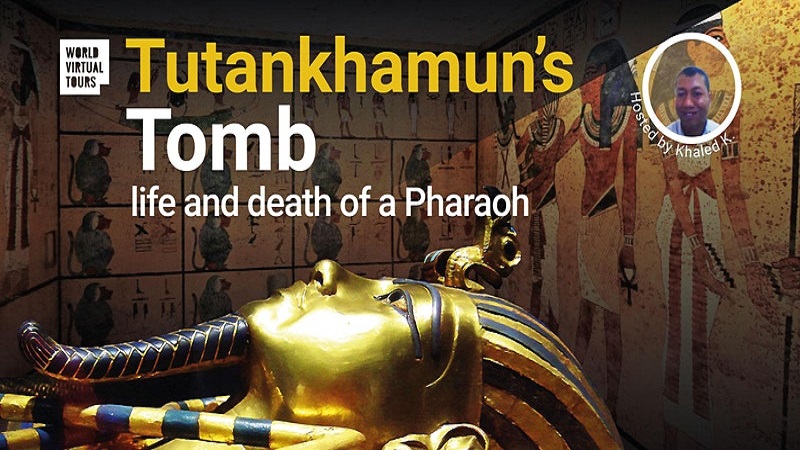
FREE – Tutankhamun’s Tomb: life and death of a Pharaoh. Virtual Tour
Sat, Mar 12, 2022 2:00 PM - 3:00 PM Eastern Standard Time (UTC-5)
Register here .
Discover with us Tutankhamun’s secrets! Join the Virtual Tour of the famous King Tut’s Tomb and his Amazing Treasure.
About this event
Build this project with us:
Our Tours are FREE TO JOIN
the Event is TIP-SUPPORTED (read below)
Check here your local time: https://zpr.io/UJvjw3mNGNFg
Language: English
Live event from Egypt with a Local Egyptologist and licensed tour guide
- The Tomb of King Tut
- The Mask and the Treasures at the Cairo Museum
- Live Q&A
- Contents suitable for children
Description
Our Egyptologist host will reveal the magnificence of the tomb of King Tutankhamun and also will show you the golden Mask and all his Treasures at the Cairo Museum.
Are you interested in the story and the curse of the most famous king of ancient Egypt? Then let’s take you back in time during this online event!
We explore the tomb of King Tut, located in the Valley of the Kings . This young king from the New Kingdom was around 10 years old when he ascended the throne and died when he was only 19. You will get the chance to see his Royal Mummy .
We use our knowledge of Egyptology and our experience as qualified tour guides to give you the best possible alternative to visiting these tombs in real life. And of course you will have the opportunity to ask any of your questions.
Let us bring the ancient history back to life for you in a fun and interactive way in this journey to the King Tut’s Tomb!
SPECIAL INSTRUCTIONS and REQUIREMENTS
- PC, laptop, tablet or smartphone
- Stable internet connection
- This experience will use Zoom
PLEASE NOTE: since is a Free Event with high demand, if you don’t connect on first 10 mins from tour start, we reserve the rights to assign your reserved seat to someone else
Read Carefully Our TOS here: https://worldvirtualtours.online/terms.html
You can TIP Khaled here: https://worldvirtualtours.online/tiptheguide.html?guide=Khaled
Why donate to your Tour Guide
Our project is solely funded by your donations.
All our virtual tours are made possible only thanks to your support as part of our Community.
The majority of your tip supports the Guide , the rest lets our group continue to carry out our initiative.

IMAGES
VIDEO
COMMENTS
Today we take you on an exclusive tour to see the iconic mask of the Golden Pharaoh, Tutankhamun, in the Egyptian Museum in Tahrir. Tutankhamun has captivated audiences worldwide since British archaeologist Howard Carter discovered his tomb back in 1922. He has become an international icon of our Egyptian civilization. Painstakingly excavated over the course of almost ten years, the tomb's ...
This video gives an understanding of the life and death of King Tutankhamun for KS2 pupils. BBC Teach. ... Finding out about Howard Carter's extraordinary discovery of King Tutankhamun's tomb in 1922.
https://patreon.com/freeschool - Help support more content like this!The pharaoh Tutankhamun is one of the most famous Egyptian rulers in history. Known by m...
The air was hot and musty as the explorers made a hole in the plaster-filled doorway of the ancient Egyptian tomb. No one had seen inside this royal resting place for 3,000 years, and they didn't know what they would find. When archaeologist Howard Carter held up a candle to peer inside on November 26, 1922, the light glinted on golden objects.
BBC Teach > School Radio > Tutankhamun: 100 Years. On 4 November 1922 archaeologists excavating in the Valley of the Kings in Egypt uncovered a hidden step, carved in the rock. The step led to an ...
King Tutankhamun: Treasures of the Golden Pharaoh and Tutankhamun: Enter The Tomb are at Saatchi Gallery, Duke of York's HQ, King's Road, London SW3 4RY until 3 May 2020. Tickets for both shows ...
Celebrate by learning all about the ' Boy King ' in our Tutankhamun's Treasures Primary Resources - packed with fascinating information and exciting activities for children to enjoy! These primary resources feature mind-blowing facts and images about the world's most famous pharaoh. By investigating the amazing artefacts discovered in ...
Unearthed | Tuesdays at 10/9cTake a virtual tour of the final resting place of the boy king, as conservators work to preserve the delicate artifacts and unde...
Key learning points. In this lesson, we will learn about the discovery of Tutankhamun's tomb and the incredible artefacts uncovered. Licence. This content is made available by Oak National Academy Limited and its partners and licensed under Oak's terms & conditions (Collection 1), except where otherwise stated.
Contained in this Tutankhamun's Tomb Discovery School Assembly Pack is a PowerPoint presentation along with a handy script for you to follow through with during the assembly. With a super eco version of the script being available too, you can choose whichever printing option is best for you. This assembly pack will take away all the stress of ...
As part of celebrations for the 100th anniversary of the discovery of King Tutankhamun's tomb, the Tourism and Antiquities Ministry, represented by the Supreme Council of Antiquities, on Friday launched the first virtual tour of the tomb recreated as it was first discovered in 1922, with all artifacts intact.
This resource pack includes everything you might need in a lesson about Ancient Egypt and Tutankhamun's treasures. This great resource pack allows your KS2 learners to have a close look at just a few of the thousands of artefacts found in Tutankhamun's Tomb. This resource pack includes: A PowerPoint presentation about the discovery of Tutankhamun's tomb and Tutankhamun's treasures. A pack of ...
Children learn about the discovery of Tutankhamun's tomb. They orally retell the key events in pairs, before writing a short note in role as Howard Carter or Lord Carnarvon detailing what they have discovered. These can be published. on tea-stained paper and put on display, or used as part of an end-of-unit 'museum'.
Tutankhamun's Tomb Lesson. Subject: History. Age range: 7-11. Resource type: Lesson (complete) File previews. pdf, 26.09 MB. ppt, 61.99 MB. A full lesson for KS2 about the exciting discovery of Tutankhamun's tomb. The resource includes a detailed lesson plan, Powerpoint and pupil resource sheets.
(Un)Complicating the Story of the Discovery of the Tomb. This post is a special feature by Egyptologist Tessa Litecky, in honor of a virtual tour of the Tomb of Tutankhamun for an upcoming exhibition between the Harvard Museum of the Ancient Near East (HMANE) and Ministry of Tourism and Antiquities in Egypt.. We're proud to share the guided virtual tour preview.
To help bring ancient history to life, our Tutankhamun PowerPoint comes complete with stunning real-life photographs and some of our own lavish illustrations. In stunning detail, your pupils can look and see the locations of important places in Egypt, a layout of Tutankhamun's tomb and some of the incredible artefacts found there.
A 3000-year-old tunic of armour was discovered at Tutankhamun's tomb, made up of small leather 'scales' that interlocked (similar to those shown in the image) to protect the wearer's skin from enemy attacks. This armour was originally thought to be ceremonial. It may have never even been worn by Tutankhamun himself.
It is likely that Tutankhamun was born around 1346 BC in Akhetaten, which was then the capital of Egypt. He was called the 'boy king', becoming pharaoh when he was only 9 years old. He later married but did not have children. Archaeologists have used forensic evidence from clues found in his tomb to tell us that he died at the young age of 19.
Egypt Virtual Tour of King Tut's Tomb. The Media Line Staff. 01/01/2021. Multiple Saturdays, 8 to 9 pm UTC, starting Jan 9, 2021. Tickets ($10) here. Join us on this virtual tour to Luxor, where we virtually visit the tomb of the famous King Tutankhamun and the tomb of Queen Nefertari! With this virtual tour, we take you to the tomb of King ...
A virtual tour of King Tutankhamun's tomb, buried in the Valley of the Kings, near Luxor, Egypt. 00:34 - Source: CNN Stories worth watching 16 videos
Discover with us all the secrets of the famous Pharaoh Tutankhamun's Tomb and his Amazing Treasure from the Cairo Museum.
Students will love learning about the mystery of King Tut's death and the discovery of his tomb. This product includes: A reading passage and crime scene report on the death of King Tutankhamun - students then decide what was the cause of his death and write a persuasive report, giving evidence. A reading comprehension and 2 differentiated ...
Virtual Tour - The Media Line. FREE - Tutankhamun's Tomb: life and death of a Pharaoh. Virtual Tour. Sat, Mar 12, 2022 2:00 PM - 3:00 PM Eastern Standard Time (UTC-5) Register here. Discover with us Tutankhamun's secrets! Join the Virtual Tour of the famous King Tut's Tomb and his Amazing Treasure. About this event.